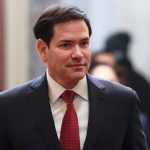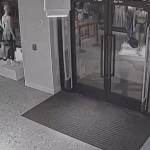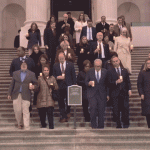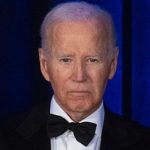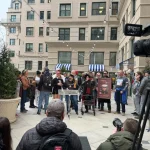President Donald Trump‘s declaration that antifa is a terrorist organization was long-awaited, but the consequences are so far uncertain.
Antifa, short for Antifascist Action, is a radical left-wing militant network that endorses terrorist tactics in order to combat fascism, which translates to any political group or figures opposed to its lofty, sometimes Marxist aims. Though antifa and its supporters have attempted to deflect attention and investigation by claiming it is a movement and not an organization, multiple investigations into local chapters have found a rigid command-and-control structure, a structured onboarding and training process, and strict ideological training courses.
Antifa chapters generally operate out of “community centers” and left-wing bookstores. They use sophisticated encrypted communication networks, disseminate propaganda, and even prescribe a uniform for their rioters to wear.
The first antifa, Antifaschistische Aktion, was founded in 1932 by the German Communist Party, KPD, with Soviet funding and instruction. It served as a continuation of its former paramilitary arm, the Roter Frontkämpferbund (Red Front Fighters League), which was banned in 1929. Antifa’s use of violence proved disastrous — the constant chaos it provoked and refusal to work with moderate factions was pivotal in paving the way for the Nazis‘ seizure of power.
Despite its failure in stopping fascism, antifa groups rose to prominence after the defeat of fascism in 1945. Antifa was transferred to the United States through Britain’s 1970s punk subculture scene, gaining prominence in the 2000s. The oldest U.S. antifa chapter, Rose City Antifa, was founded in Portland, Oregon, in 2007. It belongs to the national Torch Network, along with 11 other nationwide chapters, including Antifa Sacramento, Rocky Mountain Antifa, Pacific Northwest Antifascist Workers Collective, and Atlanta Antifascists.
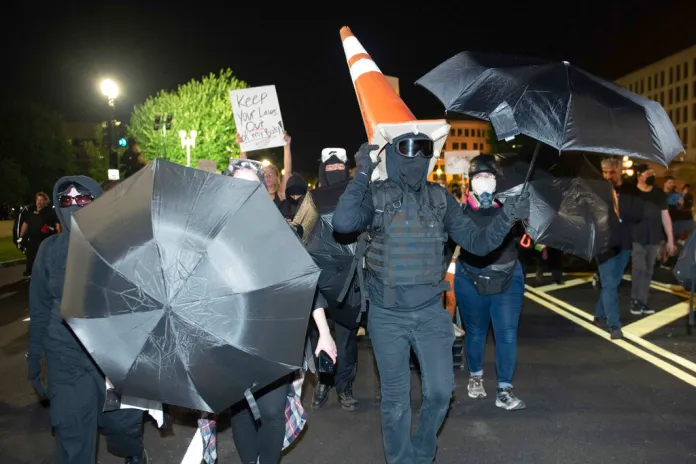
The Minneapolis Police Department deemed Torch Network the “most radical” of antifa cohorts, “responsible for accreditation and recognition of national Antifa chapters.”
Antifa became best known after Trump took office for the first time, staging violent riots in Washington, D.C., the day he was inaugurated, in Berkeley, California, and Charlottesville, Virginia, in 2017, and across the country during the George Floyd riots of 2020.
In May 2020, Trump declared that “the United States of America will be designating Antifa as a Terrorist Organization,” but the task proved difficult, as the secretive nature of the network meant it was difficult to figure out what antifa actually was. This was further complicated by the fact that most writings on antifa came from members themselves or sympathizers in academia or media, which created a smokescreen by conflating antifa, the movement, and antifascism, the political idea.
Since then, further research has been conducted establishing antifa as a concrete network with cells around the U.S. This includes a 2020 undercover operation by Project Veritas, during which a journalist infiltrated RCA and documented its operations.
One of the most important research projects about antifa came from Dr. Eoin Lenihan, who in November 2021 published the largest peer-reviewed academic study examining antifa’s extensive use of social media to organize. Lenihan spoke with the Washington Examiner, outlining how his paper and ensuing research established antifa as an actual criminal organization.
His 2022 paper, he said, “proved that antifa is indeed an organization into which one must self-select and which is driven by violent anarchist principles. Antifa is not simply an idea.”
The research paper, published in the peer-reviewed Social Networks Analysis and Mining Journal, used social network analysis tools that have been commonly used to track Islamic and right-wing extremist groups to track antifa. It found tens of thousands of accounts sympathetic to antifa, but within those included 313 “Violent Extremists,” defined as “individuals and Antifa collectives who are self-identified Antifa members and use social media for the promotion of real-world and online illegal and violent actions, including the procuring and sharing of doxes.”
These “Violent Extremists” boasted an average of 5,370 followers, giving them extensive reach.
“The study was further able to identify key accounts such as @AntifaChecker — which interacted with all official antifa accounts on Twitter and verified them as official antifa accounts. The study identified how official antifa accounts and individuals used a sophisticated structure to quickly alert their entire network of events happening across the USA and internationally to help organise actions on the ground,” Lenihan told the Washington Examiner.
One of the central findings of the study was identifying how antifa has evaded a crackdown within the U.S. — by having its propagandists dictate coverage of the group.
“The study further allowed me to identify the most prominent academics and journalists in the antifa network. This brings us to the nub of why antifa has been allowed to continue to commit acts of violence up to the present. Whenever a discussion about designating antifa a terror organization is brought up, either deliberately or through naiveté, journalists turn to antifa members or apologists to speak objectively about the group,” he said.
Lenihan pointed to the frequent media interviews of Mark Bray, author of Antifa: The Anti-Fascist Handbook.
For a “news outlet to have Mark Bray on to discuss antifa in a neutral manner is akin to having David Duke in his pomp on to give a neutral overview of the KKK,” he quipped.
“His regular appearances on national and international outlets to discuss antifa can be put down to a combination of ignorance of his actual credentials … and to his connections to other antifa-connected journalists in the national and international press,” Lenihan added.
He described Bray’s book not as a history of antifa but “a guidebook intended to persuade
readers to embrace militant antifascism.”
Half of the proceeds from the book go to the International Anti-Fascist Defence Fund, an international antifa-affiliated organization that provides legal cover for antifa militants carrying out real-world violence.
Lenihan noted that in a recent interview, “Bray attempted to portray antifa as an idea and not an
organisation yet in the introduction of his own handbook on the group, not only does he clearly state that the International Anti-Fascist Defence Fund is made up of 300 antifa groups but that he is a major financial donor of these groups both domestically and internationally.”
Lenihan’s own research found that Bray was one of antifa’s most influential thought leaders.
Designating antifa a terrorist organization is difficult, as the U.S. doesn’t have a domestic mechanism akin to the State Department’s ability to designate foreign groups as foreign terrorist organizations. Individual states can enact anti-terrorism laws, but blue states are unlikely to pass laws designating antifa a terrorist organization.
Lenihan encouraged the Trump administration to use his data-driven social network analysis, or for the administration to employ its own, to prove that antifa isn’t a movement but rather “a violent extremist organization that individuals self-select into with the understanding that acts of violence, intimidation and terrorism are, to varying degrees, expected to be carried out against individuals and the state.”
HOW THE ANTIFA MOVEMENT HAS METASTASIZED
After identifying the core network of cells, the government would be able to pursue and break it up much more easily.
“By identifying the core network of antifa cells, their relations to one another and the individuals who provide cover for them in the media and in academia, the administration can provide a robust dataset to underpin their terror designation. They can further pinpoint the most dangerous actors within the network, isolate them and disrupt the group’s ability to coordinate real world violence,” Lenihan said.

